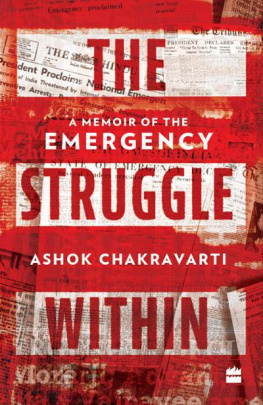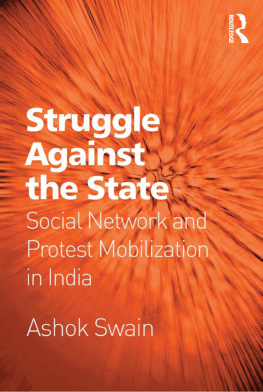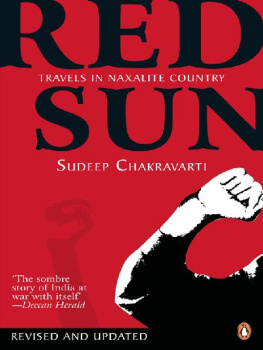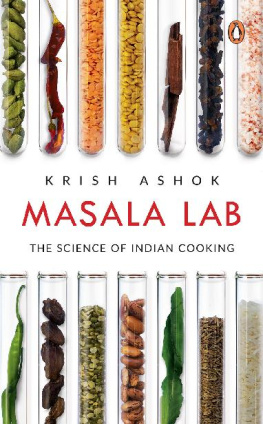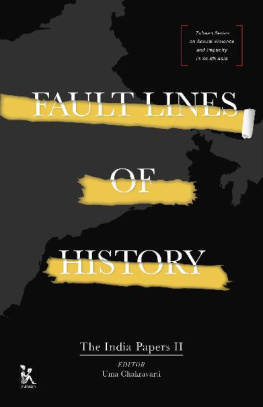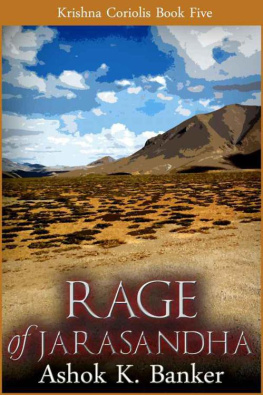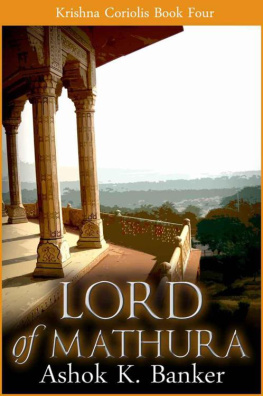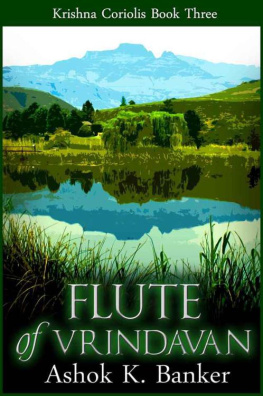Ashok Chakravarti - The Struggle Within: A Memoir of the Emergency
Here you can read online Ashok Chakravarti - The Struggle Within: A Memoir of the Emergency full text of the book (entire story) in english for free. Download pdf and epub, get meaning, cover and reviews about this ebook. year: 2021, publisher: HarperCollins India, genre: Art. Description of the work, (preface) as well as reviews are available. Best literature library LitArk.com created for fans of good reading and offers a wide selection of genres:
Romance novel
Science fiction
Adventure
Detective
Science
History
Home and family
Prose
Art
Politics
Computer
Non-fiction
Religion
Business
Children
Humor
Choose a favorite category and find really read worthwhile books. Enjoy immersion in the world of imagination, feel the emotions of the characters or learn something new for yourself, make an fascinating discovery.
- Book:The Struggle Within: A Memoir of the Emergency
- Author:
- Publisher:HarperCollins India
- Genre:
- Year:2021
- Rating:5 / 5
- Favourites:Add to favourites
- Your mark:
- 100
- 1
- 2
- 3
- 4
- 5
The Struggle Within: A Memoir of the Emergency: summary, description and annotation
We offer to read an annotation, description, summary or preface (depends on what the author of the book "The Struggle Within: A Memoir of the Emergency" wrote himself). If you haven't found the necessary information about the book — write in the comments, we will try to find it.
The Struggle Within: A Memoir of the Emergency — read online for free the complete book (whole text) full work
Below is the text of the book, divided by pages. System saving the place of the last page read, allows you to conveniently read the book "The Struggle Within: A Memoir of the Emergency" online for free, without having to search again every time where you left off. Put a bookmark, and you can go to the page where you finished reading at any time.
Font size:
Interval:
Bookmark:

To the memory of those who fought for the restoration of democratic rights in India and against the Emergency of 1975. Their struggle gives credence to the famous saying Eternal vigilance is the price of liberty.
Contents
T HE DECADE OF 1967 to 1977 was one of the most turbulent in the history of post-Independence India. During this period, the future of Indias democracy was on a knife-edge. Prior to the 1970s, the resilience of the political institutions established under the Constitution had never been tested. In all the elections held since Independence, the Congress Party had won comfortable majorities. Then, in 1969, the Congress Party split and Indira Gandhi was expelled from its ranks. Not to be deterred, Mrs Gandhi declared Garibi Hatao (Eliminate Poverty) as her splinter groups slogan, and won a landslide victory in the March 1971 elections. However, this was a pyrrhic win. The economy had been performing poorly for over a decade, and the situation was dire. Inflation was skyrocketing. Poverty and unemployment were rife, and the country was in a state of turmoil. Strikes, demonstrations and agrarian unrest were the order of the day. Inspired by the peasant revolt in Naxalbari in 1967, the landless and poor in West Bengal, Bihar and other states had begun attacking landlords and taking over their estates. In the urban areas, there were regular protests by students and workers, resulting in violence and police firings. In 1973, the Provincial Armed Constabulary of Uttar Pradesh revolted and the army had to be called to suppress this mutiny.
It was in this environment that in early 1973, a group of idealistic left-wing political activists based in Delhi decided to form a group. Their objective was to participate in the ongoing struggles of workers and peasants in the country, and eventually bring about revolutionary change in India. Initially, they mobilized and participated in the workers movement in and around the capital city. This included strikes by textile workers; by the Harijan sweepers and cleaners or safai karamcharis of the municipal corporation, as they were called; and the all-India railway strike of 1974. The latter almost brought the whole country to a standstill. However, the state of Emergency declared on 26 June 1975, and the suspension of democratic rights guaranteed under the Constitution, deflected them from their purpose. The goal of a socialist revolution was set aside for the time being, and they redirected their energies towards the more immediate task of the restoration of democratic rights in the country. This book is an account of their struggle against the regime of Mrs Indira Gandhi, who tried to impose a dictatorship on the people of India. The story is told through the eyes of Arjun, one of the political activists. Arjun was my incognito name while I was part of the underground movement during this period.
The Emergency lasted from June 1975 to March 1977. It was post-Independence Indias darkest hour. Over 150,000 people were arrested and kept in prison, without trial, for almost two years. The number of people killed in police firings or eliminated in prisons is unknown, but could well run into the thousands. Eleven million men and women were subjected to forcible family planning, including vasectomies, tubectomies and other forms of sterilization.
The heroes of the Emergency were many mostly unknown who were beaten, tortured or killed in fake encounters, in prison cells, or elsewhere, fighting against the dictatorship. A few of them are part of this story. The villains and their henchmen are well known. Mrs Gandhi, her son Sanjay Gandhi, and their coterie, who were the forces behind the Emergency, were eventually defeated in the elections of March 1977 by a united front of the people of India led by Jayaprakash Narayan and a broad coalition of opposition political parties.
The reader may note that certain expressions which are not politically correct, in particular, words referring to caste categories such as bhangi and chamar, are used in the text. This also includes phrases such as disabled or mentally retarded, which were in common social usage during the 1960s and 1970s. I would like to categorically state that such words and phrases are not being used to hurt the sensibilities of any person or community. The caste words are being used in the original sense, as part of a social language used to identify a community during the period covered by this book. They are purely descriptive in nature. There is no derisory, denigrating or insulting content, or intention, whatsoever. On the contrary, these words are being used with the great respect and empathy that I have for these communities. During the Emergency, I lived and worked in the bhangi bastis of Delhi; they were my friends and comrades, and I was extremely proud that this community accepted me as one of their own.
I would like to acknowledge the support, the ideas and the incisive critiques I received from Shobna Chakravarti, Sundeep Dougal, Hansa Patel and Tarini Chakravarti. Their contributions were invaluable for the writing of this book. Last but not least, I am most grateful to my editors, in particular Krishan Chopra and Rinita Banerjee, for their patience in assisting me to finalize the manuscript.
New Delhi
May 2021
I T WAS A SCORCHING May afternoon in 1973 when Arjun arrived back in Delhi on a flight from London. The six years he had spent at Oxford University had gone like a flash. His main concern at the moment was the 1,000 pounds sterling he was carrying on him to contribute to the revolutionary movement in India. He was worried that a customs official would discover this booty and confiscate it. Then how would he start his revolutionary activities? As it happened, he had nothing to fear. The currency notes were well hidden in the sleeve of a long-playing record, and there being no X-ray machines in those days, the customs officials let him pass after a perfunctory search. Outside the customs area, his parents were waiting to pick him up. Arjuns father was the governor of Himachal Pradesh at that time, based in Simla. During the governors visits to Delhi, it was customary for him to stay at Rashtrapati Bhavan, the residence of the President of India. Arjun was therefore bundled into the car and escorted to Rashtrapati Bhavan. Riding in the official car emblazoned with the three-headed lion emblem of the Indian state, Arjun could not but think of the irony of his situation. He had just returned to India with his head full of all kinds of revolutionary ideas, but his first act was to spend a couple of days at the residence of the President of India, a primary symbol of the state that he sought to overthrow.
After a few days, Arjuns parents took him over to his brothers house at the University of Delhi. No one questioned why, after all these years at Oxford, he had returned without any precise sense of what he was proposing to do in the future. Nor was he asked why he had not completed his PhD, which at most would have taken another year of study. Most of Arjuns peers had by now obtained employment in large multinational firms, banks in the City of London, or international organizations such as the World Bank. Unfortunately for Arjun, both his mother and his father were too involved in their own lives. There was no advice or direction from them. Their son would have to figure things out for himself, and find his own way through life.
Arjuns brother was a mild-mannered academic. He and his wife were both professors at the university. Their lives were focused on teaching their students and their research. However, they were also intensely committed to the idea of an open, democratic society in India: a society in which there was a free flow of ideas and open debate, and where the concerns of the poor would be given primacy. India under Indira Gandhi fell short of this mark by a long way. Soon after Arjuns return, his brother expressed mild curiosity as to what his plans were and what he was proposing to do. When Arjun explained to them his newly found social consciousness and his desire to participate in the ongoing political movements to bring about radical change in the country, they were somewhat surprised. Arjun had never struck them as a person who would give up a promising international career to become a political activist. After all, he had been at Oxford for six years, spent some time teaching there, and had even done a stint with the World Bank in Washington, DC. In spite of their scepticism, however, they agreed to help him in any way that he needed.
Next pageFont size:
Interval:
Bookmark:
Similar books «The Struggle Within: A Memoir of the Emergency»
Look at similar books to The Struggle Within: A Memoir of the Emergency. We have selected literature similar in name and meaning in the hope of providing readers with more options to find new, interesting, not yet read works.
Discussion, reviews of the book The Struggle Within: A Memoir of the Emergency and just readers' own opinions. Leave your comments, write what you think about the work, its meaning or the main characters. Specify what exactly you liked and what you didn't like, and why you think so.

